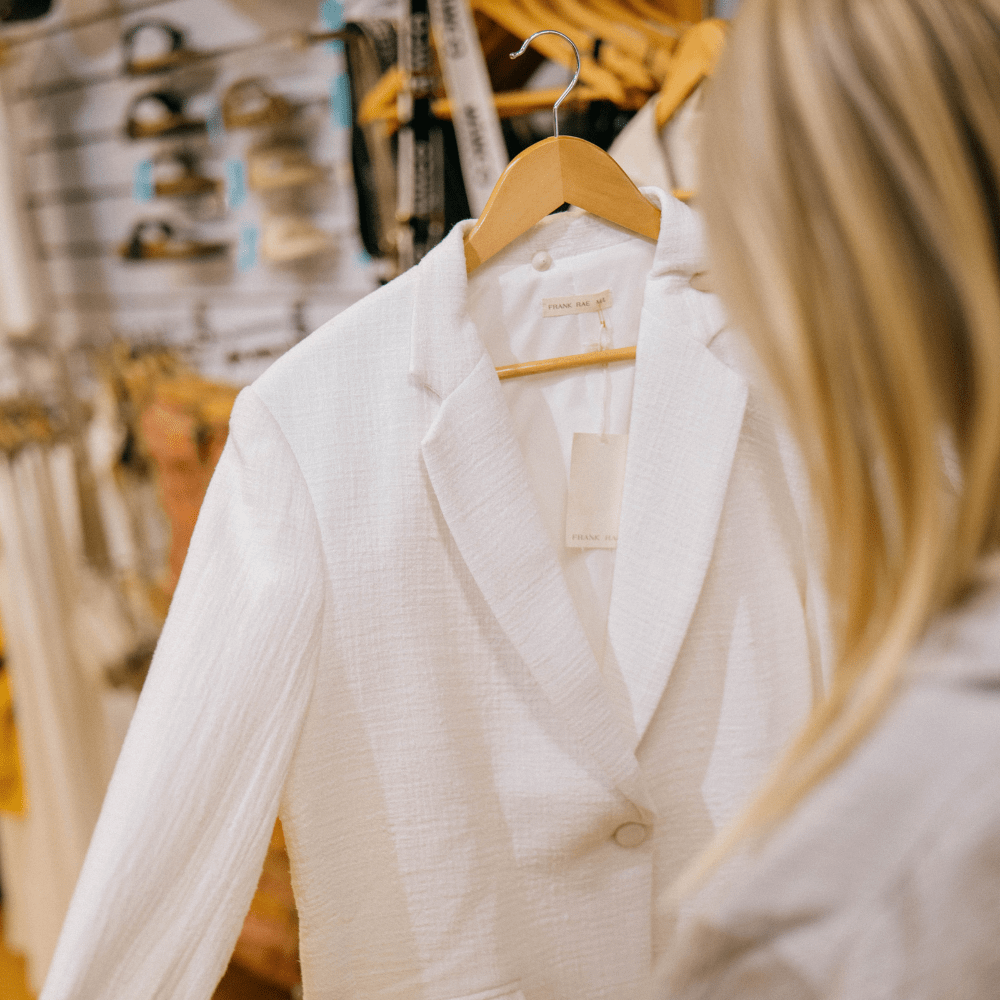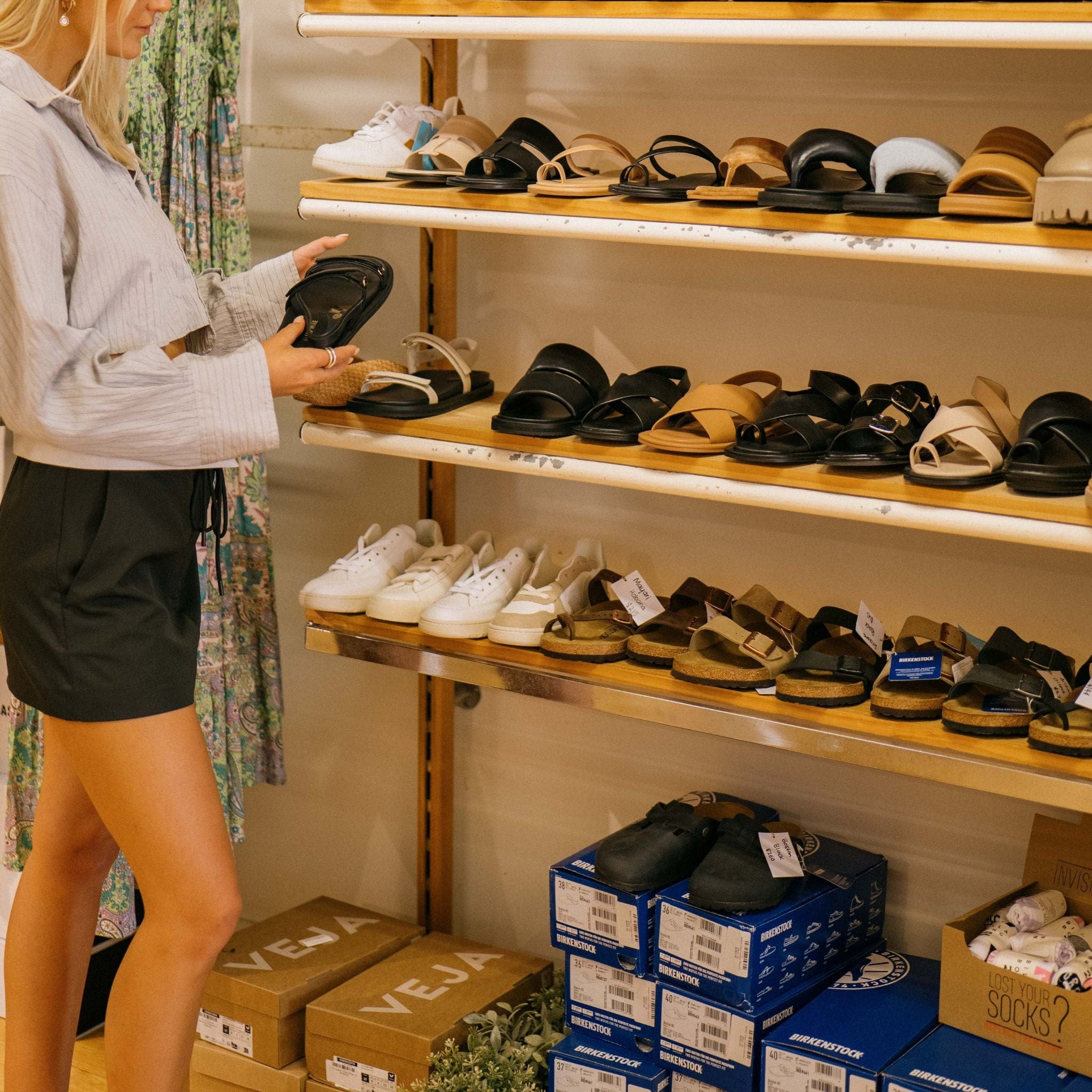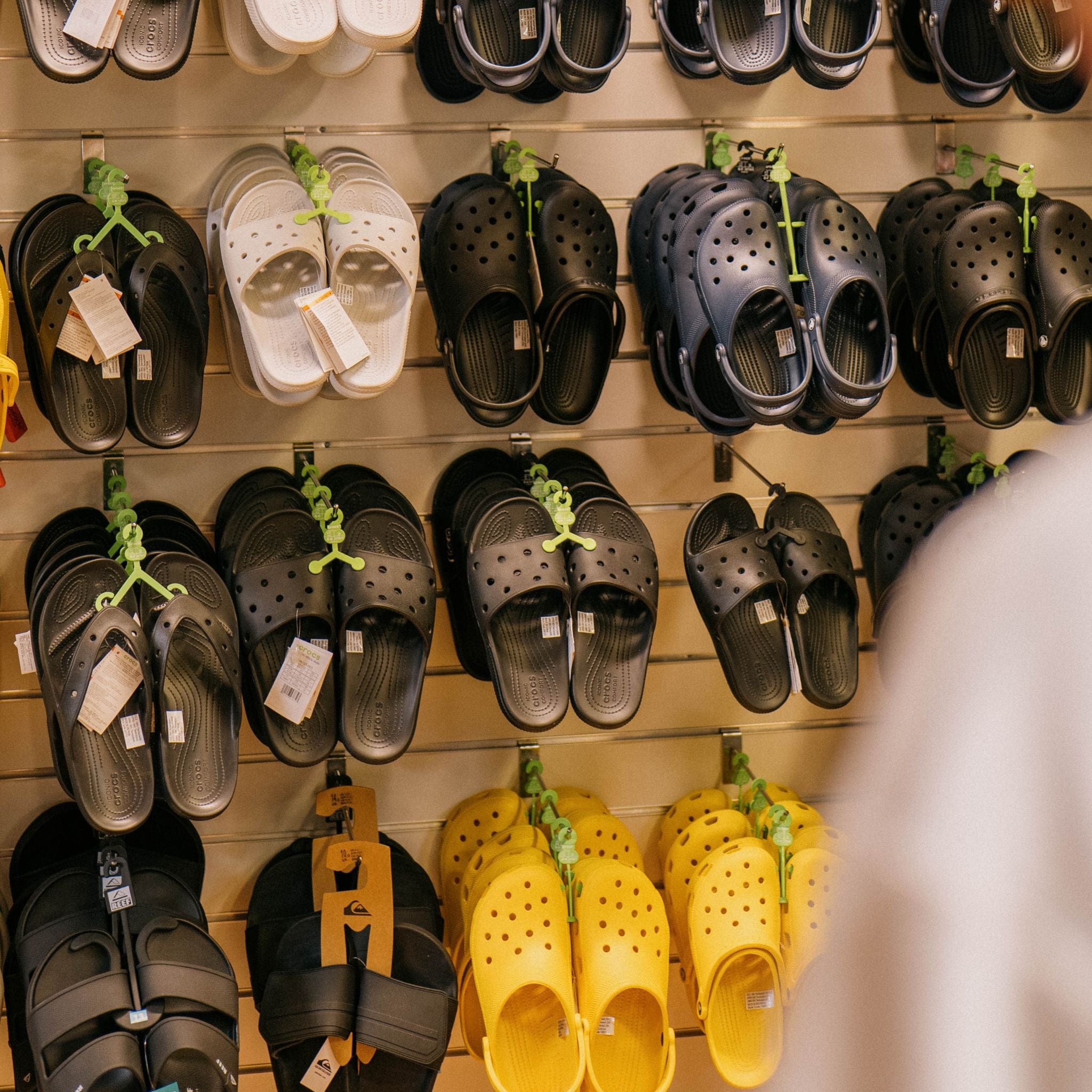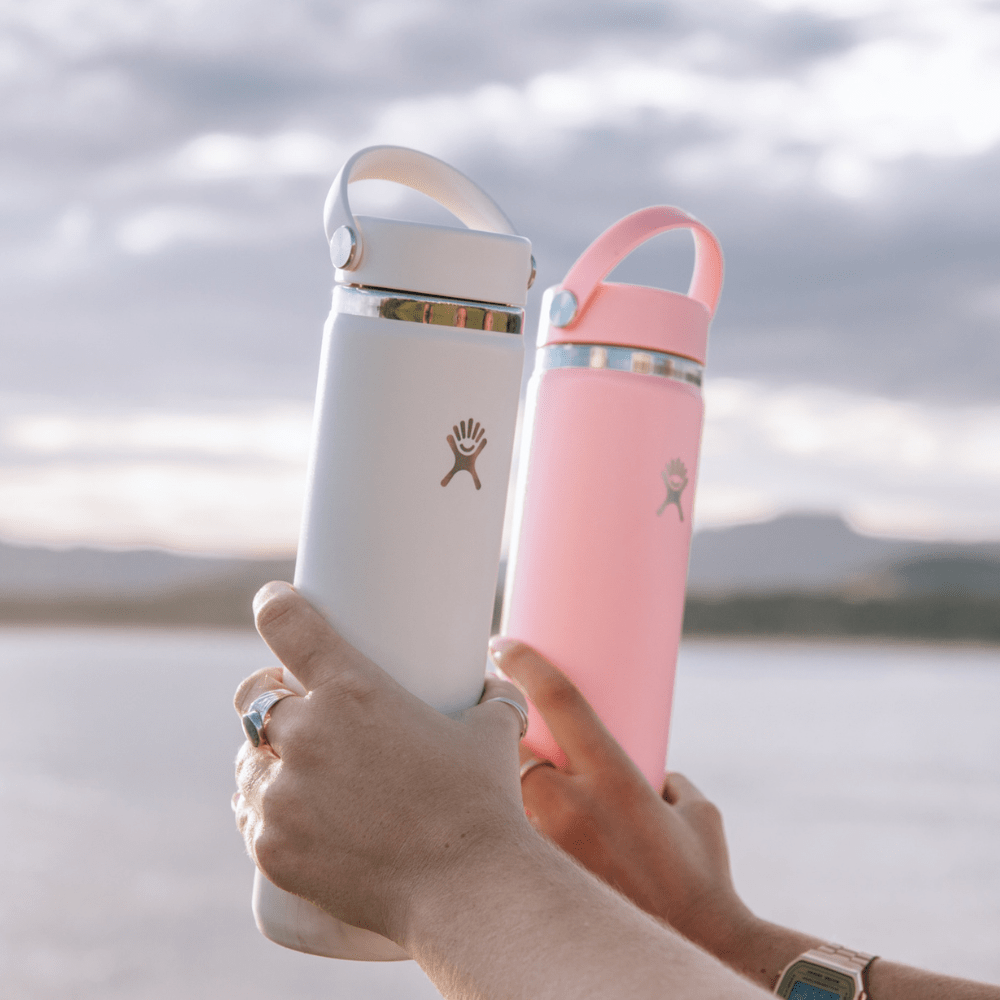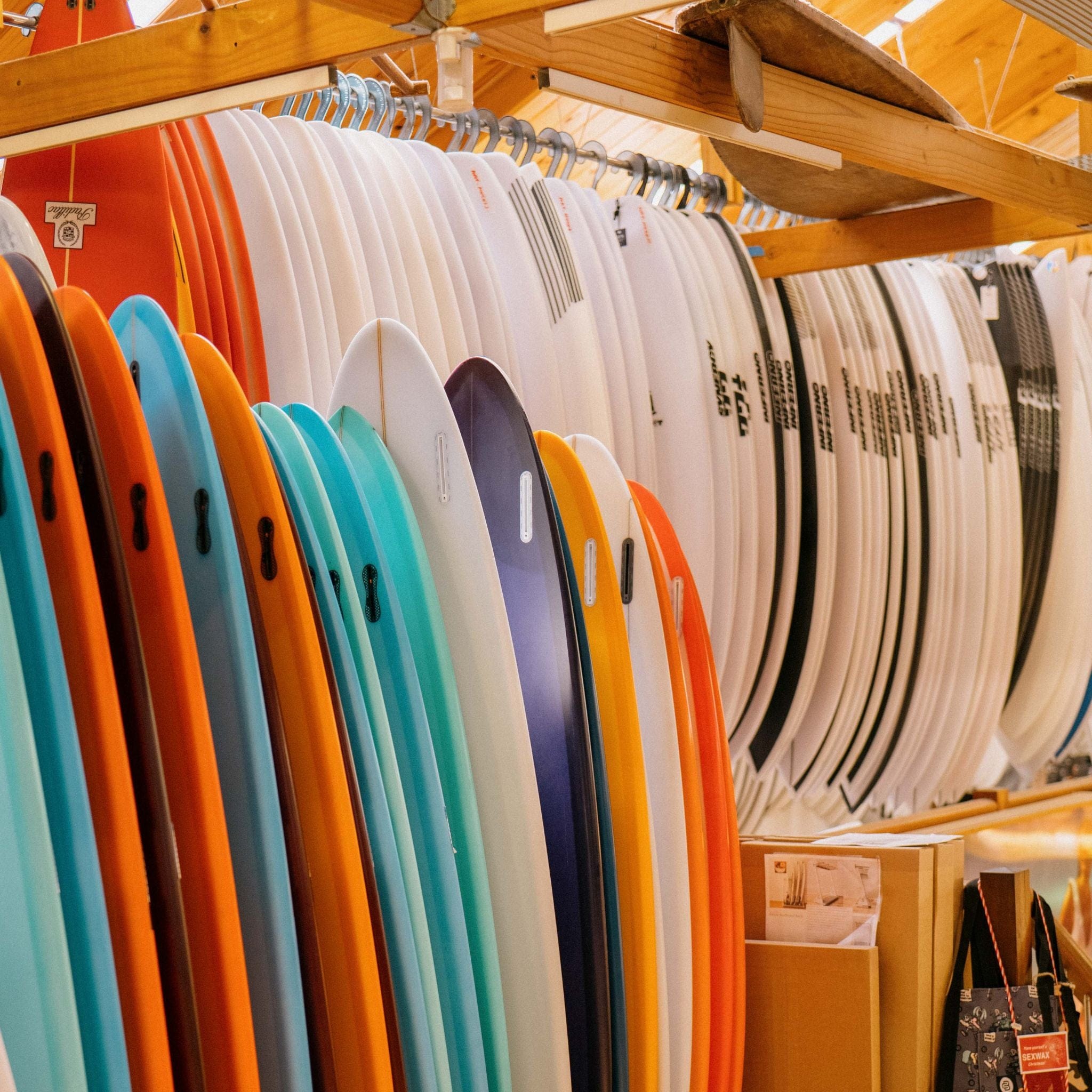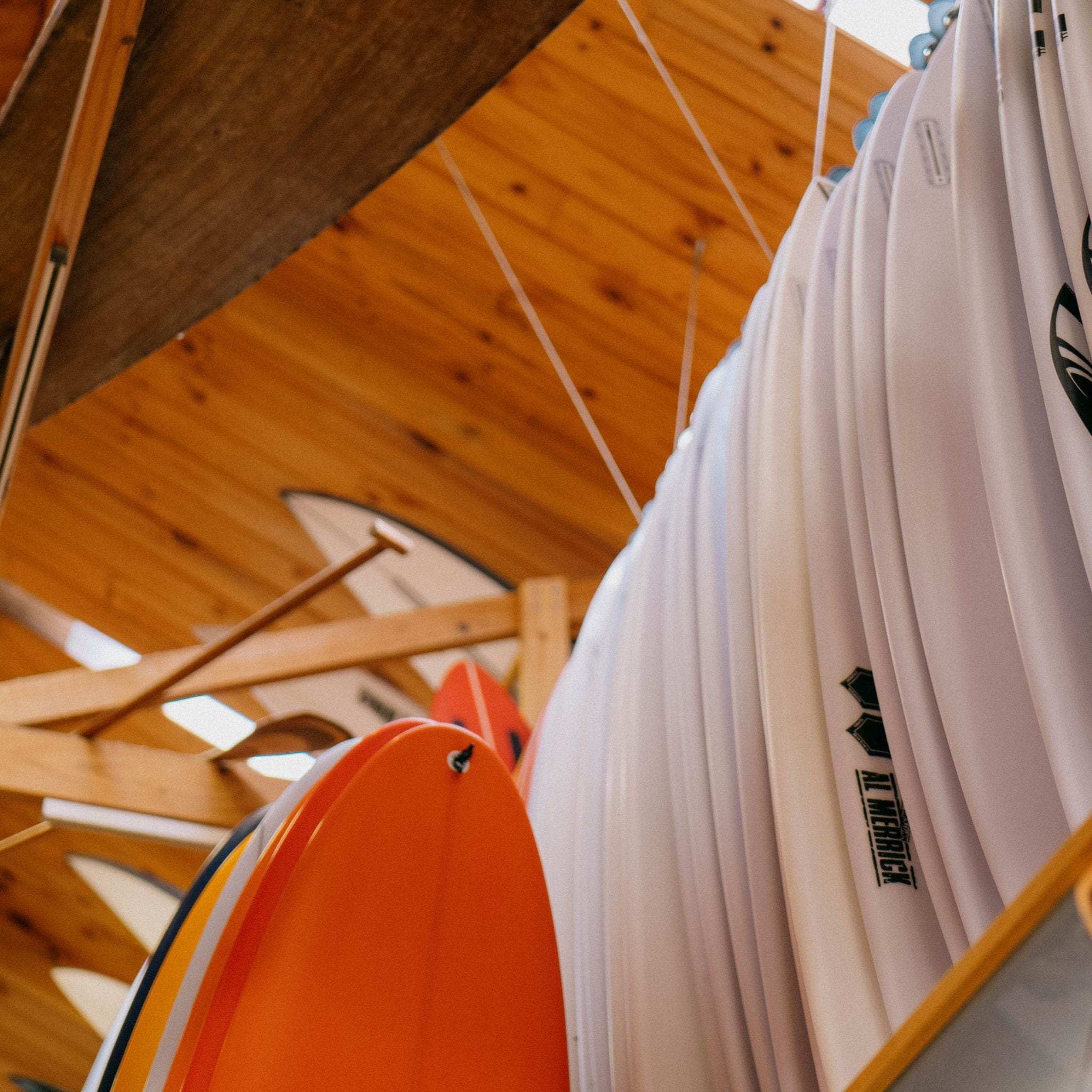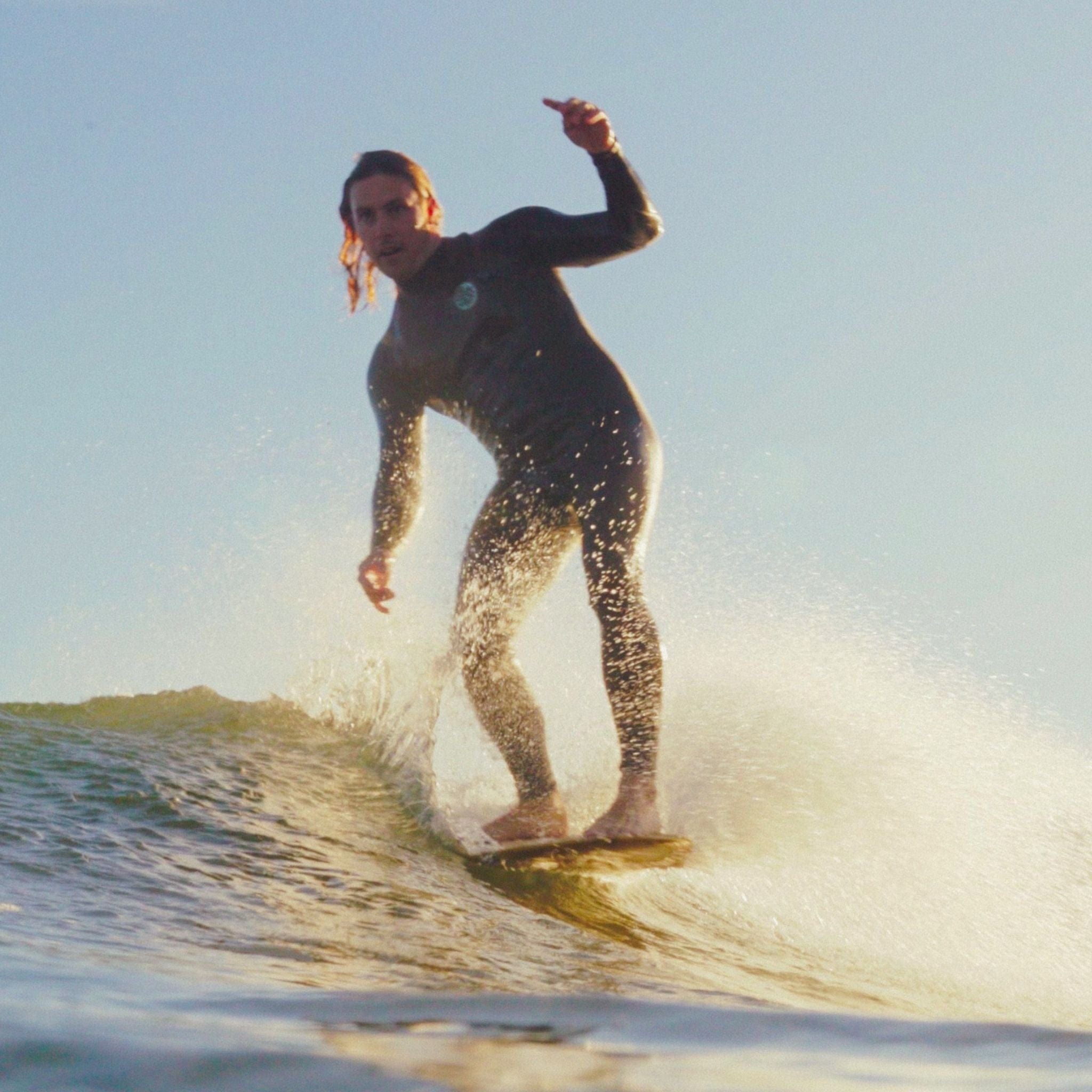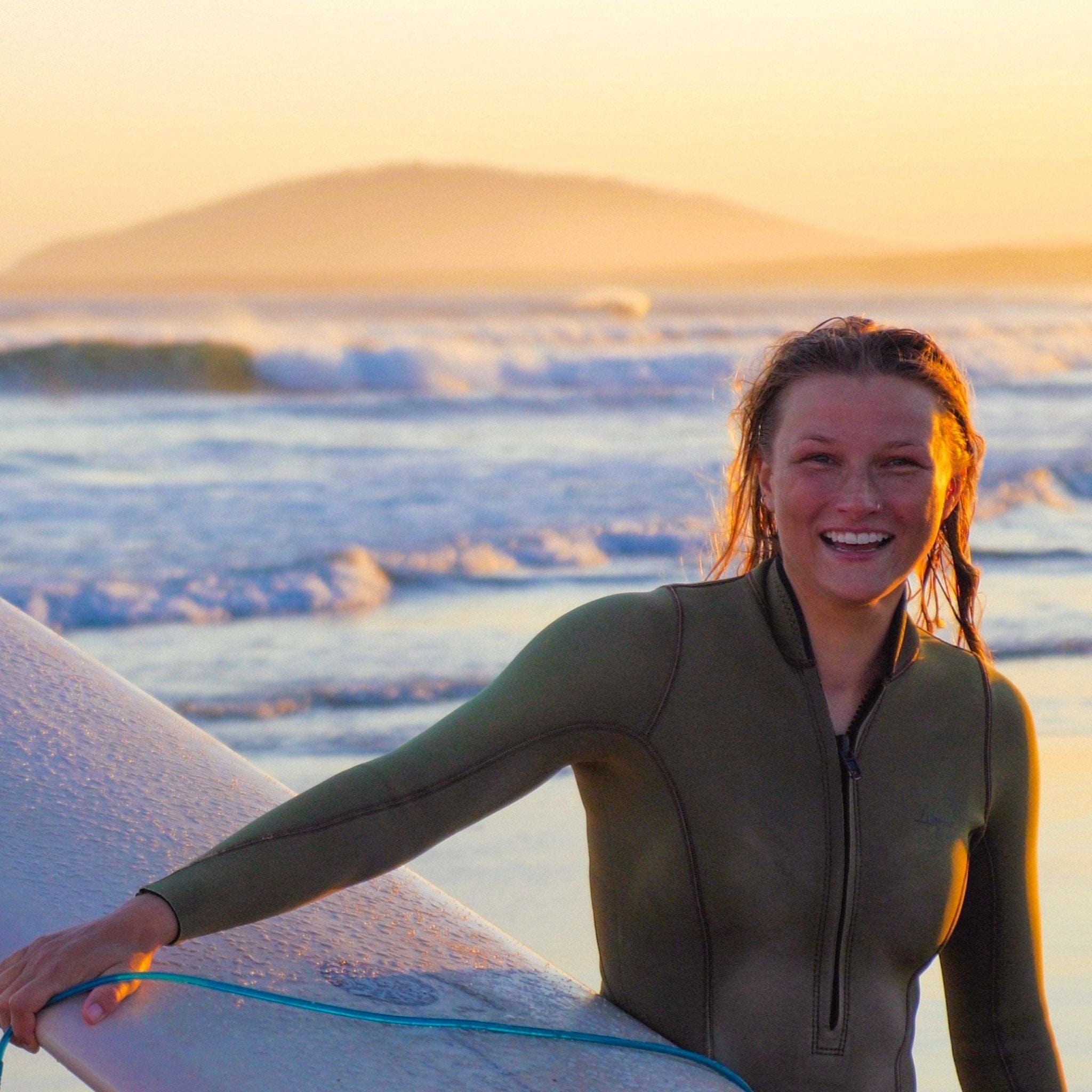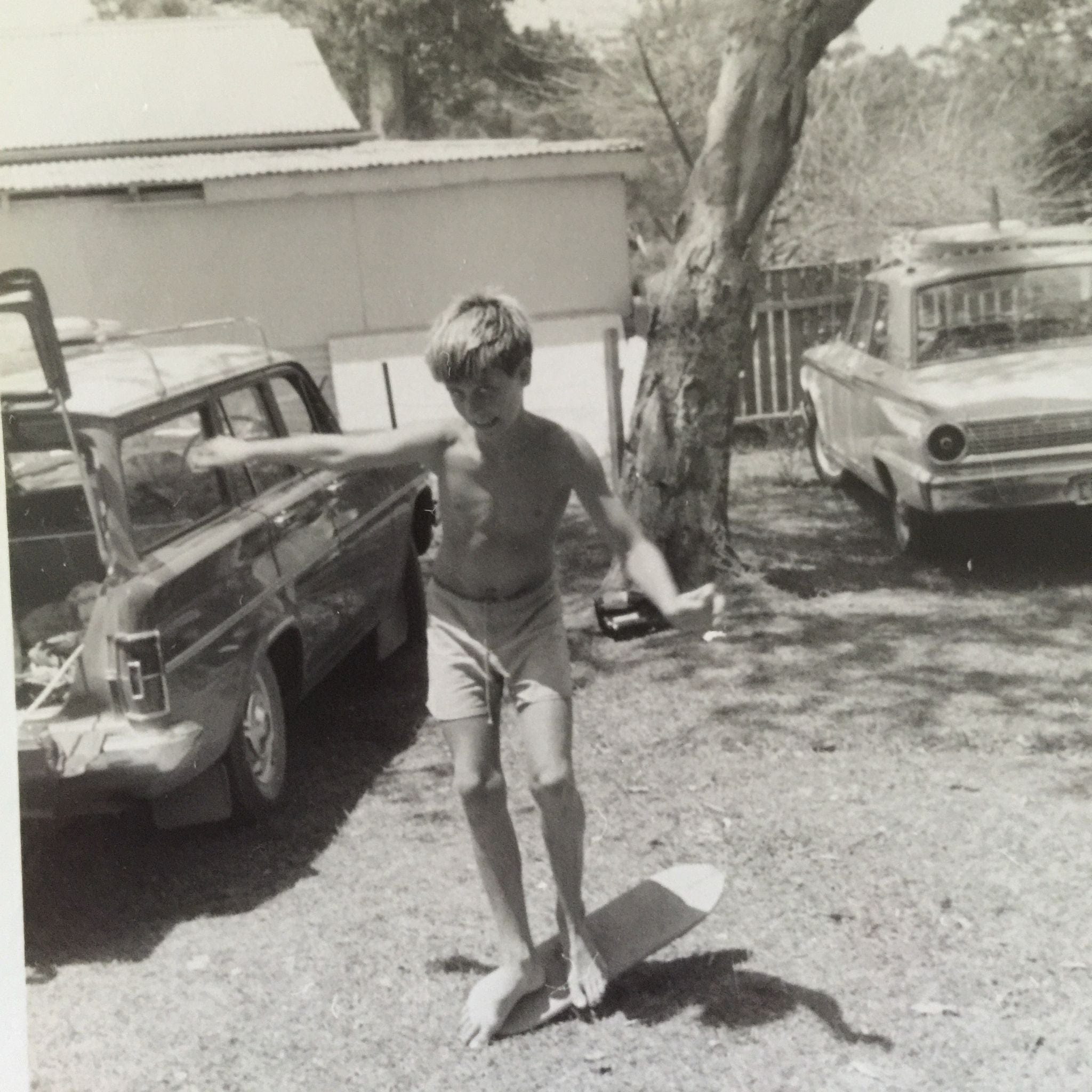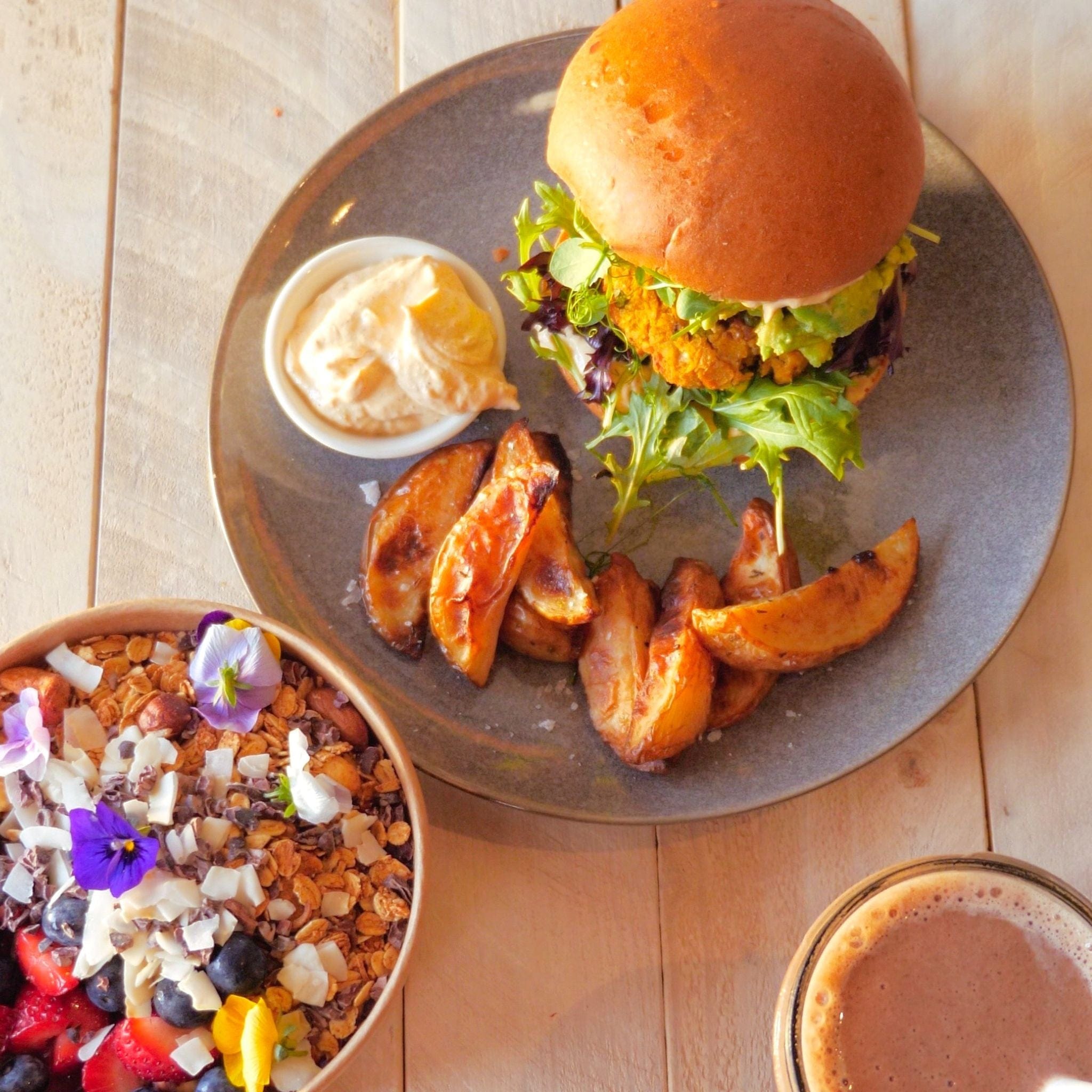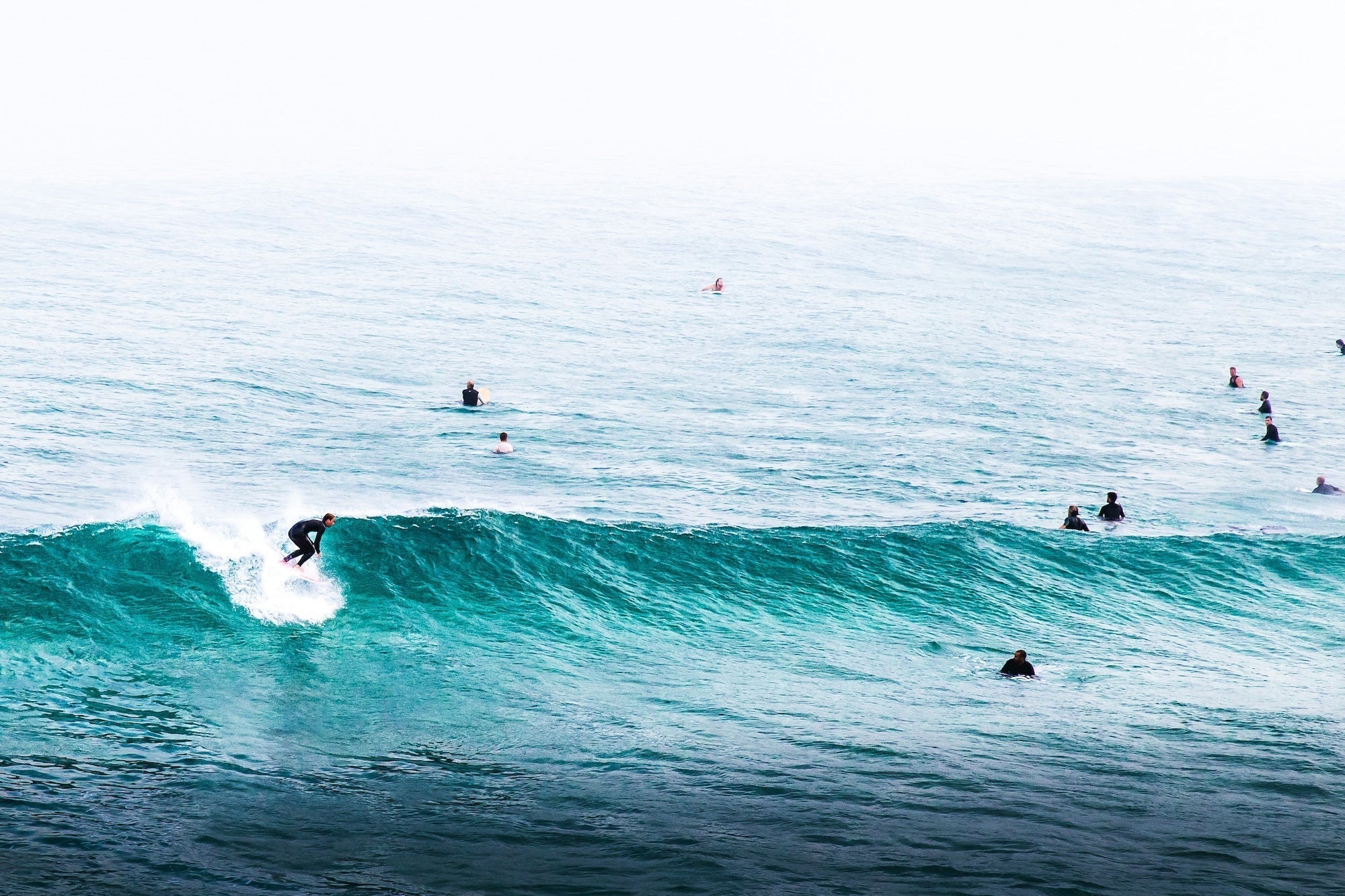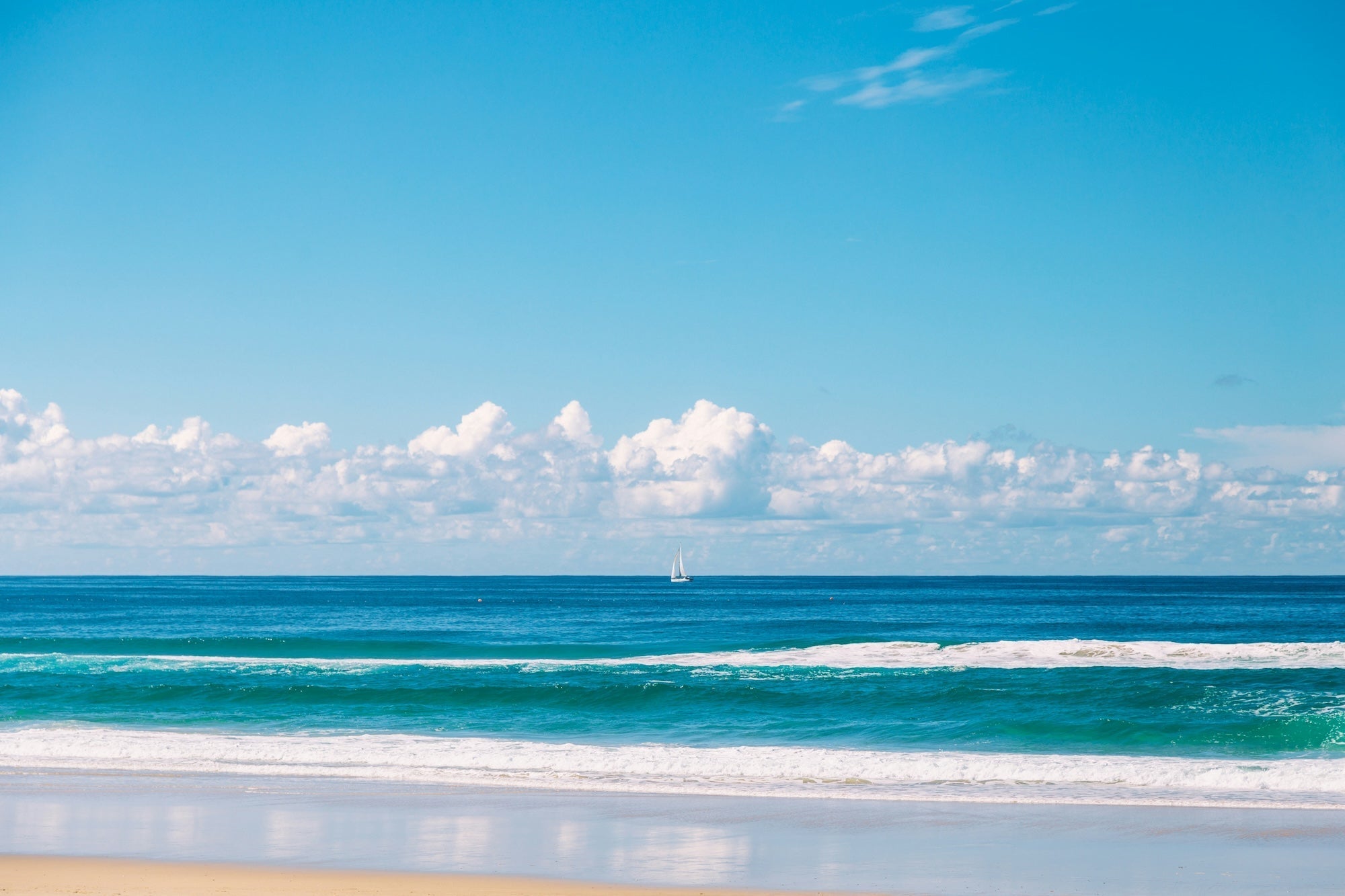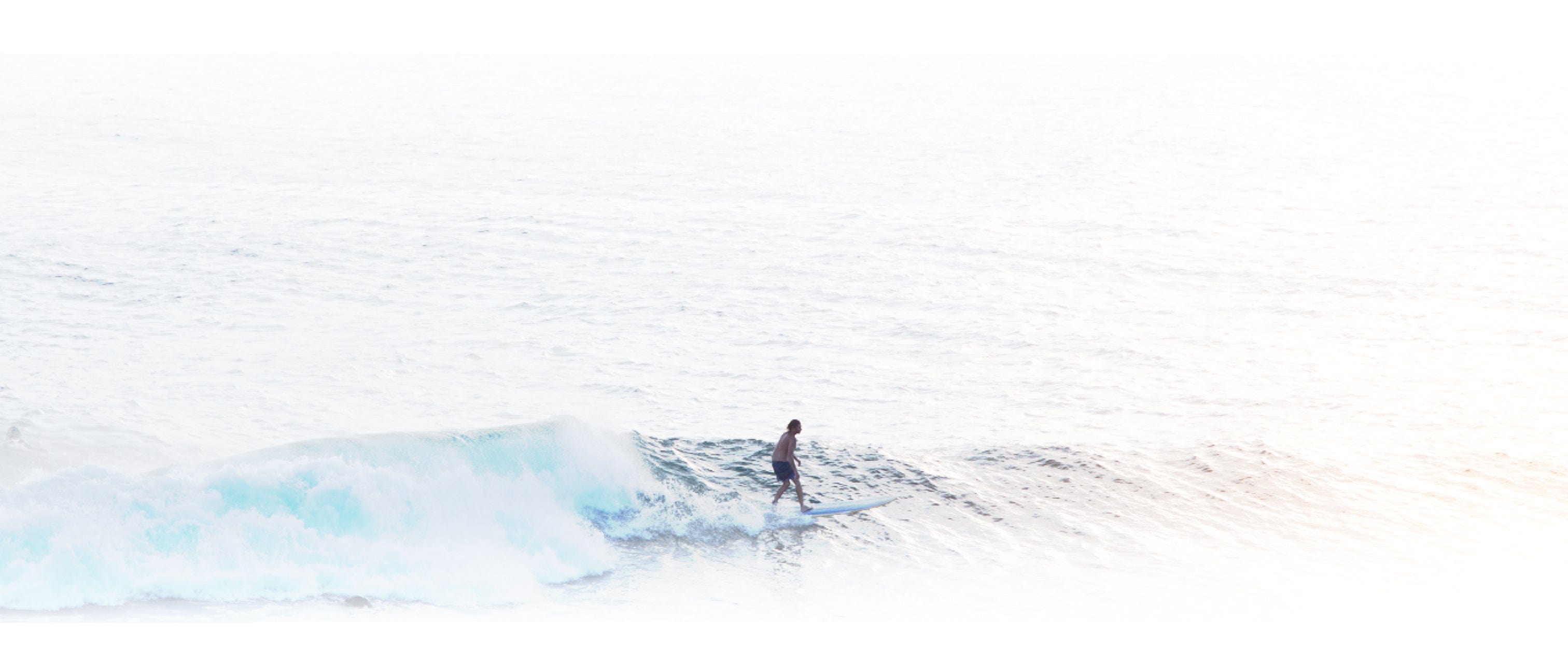The concept of the perfect surfing stance is somewhat subjective, but we can all probably agree that knowing how to stand correctly on your board is crucial for surfing well.
Surfing is, after all, a sport of aesthetics.
A poor surfing stance (aka the poo stance) can be an affront to the eyes. A good surf stance, on the other hand, is a thing of beauty.
How do you find the perfect surfing stance for you? The short answer is surf your brains out. There's no substitute for practice, after all.
The longer answer is that knowing the mechanics and technique behind a good surf stance can help you improve and perfect your own.
Here's our interpretation of a good surf stance based on decades of surf experience.
Ready to say, “Adios, poo stance”?
Let’s do it.
Importance of a Proper Surfing Stance
For all surfing's casual, airy and cruisy ways, it's a sport that demands precision. And nothing is more crucial to getting things right than your stance on the board.
A proper surfing stance creates a strong foundation for balance and control while riding the waves.
It also allows you to move dynamically and fluidly so you maintain speed and can ride waves for longer with more skill.
Knees bent, back straight-ish, weight centered over your board are the basics of a good surf stance.
From there, it's all about finding the sweet spot on your favourite surfboard and adjusting accordingly.

Elements of a Perfect Surfing Stance
Naturally, it helps if we break down the individual elements of a proper surfing stance.
This way you can analyse your current stance to see where you need improvement and make adjustments accordingly.
Keep in mind what works for one person might be slightly different for another, so don't be afraid to experiment and find what works best for you.
Also be aware that different boards require different stances, so what works on a shortboard may not work on a longboard or fish and vice versa.
Foot position
Foot position will vary slightly depending if you're riding the wave backhand or forehand.
-
Forehand: Feet should be shoulder-width apart with your back foot on the tailpad and your front foot in the middle of the deck of the board. Your feet will be almost parallel to the stringer of the board, but not quite. Your feet will also be centered over the stringer
-
Backhand: Again, have your feet shoulder-width apart, but this time your feet will be angled slightly more towards the nose of the board. This seemingly minor shift allows for a tighter turning arc when riding backhand. Also, while your back foot will still be on the tailpad, your front foot will be marginally closer to the inside rail of the board

Knee bend
We were once told that a sign of good surfing is seeing the back knee bent so that the knee is almost touching the deck of the board.
In truth, that's pretty extreme and more appropriate for advanced or pro surfers. For those of you still learning the basics, a slight front knee and back knee bend is sufficient.
Having a slight knee bend (in the front and back knee) allows you to:
-
Absorb impact from drops and steep waves
-
Maintain balance and control on the board
-
Generate power through your legs when performing turns
Think about your knees like the suspension in a vehicle.
You can keep your upper body straight or straight-ish when up and riding, but your knees need to absorb the impact of waves and adjust to changes in the water.
Keeping a relatively low stance (i.e. knees bent almost at a right angle) allows you to absorb impacts from drops and steep waves, reducing strain on your body and helping you maintain balance.
Conversely, extending your knees through a turn is what generates power and speed.
It takes quite some practice to intuitively know when to bend or extend your knees, but with time and experience, it becomes second nature.

Shoulder alignment
Shoulders are one of the most crucial but least thought about body parts while surfing.
Proper alignment of your shoulders can make a huge difference in your overall performance and also prevent potential injuries.
When it comes to the perfect surf stance, good body position and shoulder alignment are key.
Your shoulders should be square and in line with your hips, slightly oriented towards the direction you are headed in the wave.
Avoid hunching your shoulders or rounding them forward as this can put strain on your neck and decrease your balance and stability. You'll find that the more bent your knees, the less work your shoulders have to do, making for a smoother and more controlled ride.
In addition to proper body positioning, it's also important to keep your shoulders relaxed while surfing. Tension in the shoulders can limit your range of motion and make it difficult to maneuver on the board.
Focus on keeping an open stance. That's to say your upper body is loose and relaxed, with your arms in a natural position.

Weight distribution
Proper stance is really a lesson in weight distribution.
This is because where your weight is distributed on the board can greatly affect balance, speed and control.
Applying too much weight backward on the tail of your surfboard can cause the nose to lift and your board to lose speed, affecting an almost wheelie sensation. Having too much weight forward on the nose will cause you to nosedive or catch a rail and fall.
Optimising weight distribution is a delicate play between balance and control. You could also argue that the right surfing stance will be almost entirely dependent on where you are on the wave.
For example, when taking off on a wave, it's important to have slightly more weight on the back foot. This ensures you don't go over the handlebars. Pumping over a flat or fat section, however, requires you to be more centered or even favour your front foot more.
If all of what we've said on weight distribution goes in one ear and out the other, just remember that a balanced stance is usually the best.
In other words, keep your weight evenly distributed on both feet and make small adjustments as needed depending on the situation.

5 Common Mistakes and How to Fix Them
-
Heavy front foot: One of the most common mistakes beginners make is putting too much weight on their front foot. This can lead to difficulties in balancing and making turns, as well as putting unnecessary strain on your front leg. To fix this, remember to evenly distribute your weight on both feet and continuously adjust as needed
-
Heavy back foot: If you feel like your board is skittish or difficult to control, you may be putting too much weight on your back foot. This can impede your ability to make smooth turns and can cause the board to lose momentum. To fix this, focus on keeping your weight centered and avoid leaning too far back
-
Not bending your knees: Heaps of beginner surfers and intermediate surfers hinge at the hips instead of bending their knees. This throws your centre of gravity off and makes it tough to maintain balance on the board. Remember to always bend your knees when popping up and riding a wave
-
Disco arms: You'll never reach your surfing potential if you think turns and speed generation is based on how wildly you can flail your arms. All power and drive comes from the lower body. The arms play a function in helping you keep your balance and maintain control, but they’re not the main source of power. Keep your arms close to your body and use them to make subtle adjustments as needed
-
Regular or goofy foot: Ok, this might sound obvious, but it's important to know which foot is your lead foot when surfing. If you're regular stance, this means that you have your left foot forward and your right foot on the tailpad. For a goofy footed surfer, it's the opposite. Your right foot is in front and your left foot is behind. To test this out, stand upright on a flat surface and allow yourself to slowly fall forward. The first foot you use to catch yourself is likely your dominant foot

Drills and Exercises to Improve Stance
Drills and exercises to improve your surfing stance are more focused on strengthening the muscles and improving balance for better overall manoeuvring performance.
We have a few favourites that enhance surf-specific muscles and allow you to continue surfing at your peak.
For better wave riding, we recommend working with surf coaches. Surf coaches can help most surfers improve their stance with video analysis and feedback.
Squats
Squats are a compound exercise that targets multiple muscles at once, including the legs, glutes and core. Use weights or go without. Either way, deep and controlled squats are an essential exercise for a better posture and stance.
Lunges
Lunges go one extra step than squats. They target the same muscles as squats but also strengthen your hips, which are crucial for surfing maneuvers like bottom turns and cutbacks. Add weights or resistance bands to further challenge yourself.
Mobility routines
There's heaps of twisting and turning in surfing, so it's important to train like you perform. Russian twists, woodchops and bicycle crunches engage your core muscles and improve rotational stability. You can copy world champions too. Adding yoga or pilates into your training routine will also help with flexibility and balance.
Cardio
You can have a correct stance that's beyond reproach... but after 30 minutes, 1 hour or even longer in the water, your muscles will start to fatigue and you'll find yourself lagging. Cardiovascular endurance is key for maintaining proper surf stance for extended periods of time. Run, bike and swim, with laps in the pool being an excellent way to train for surfing endurance.



